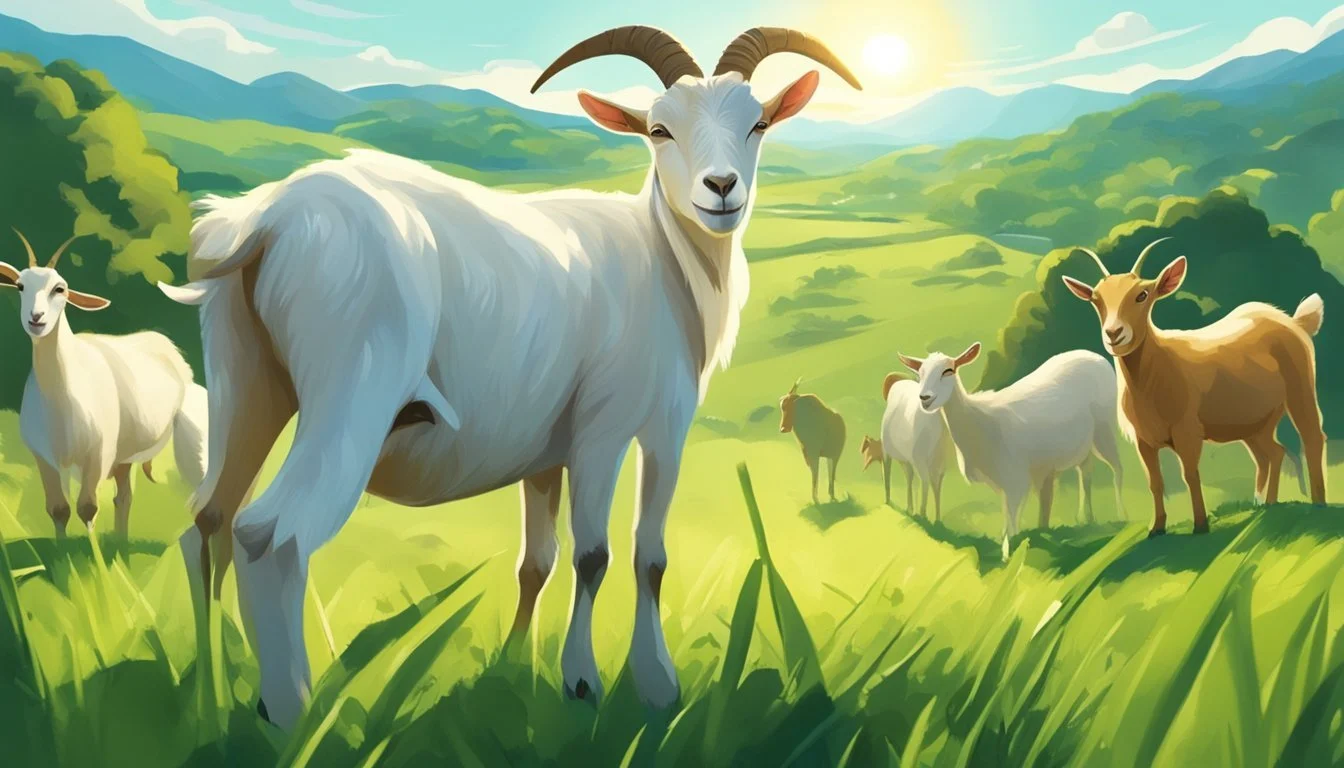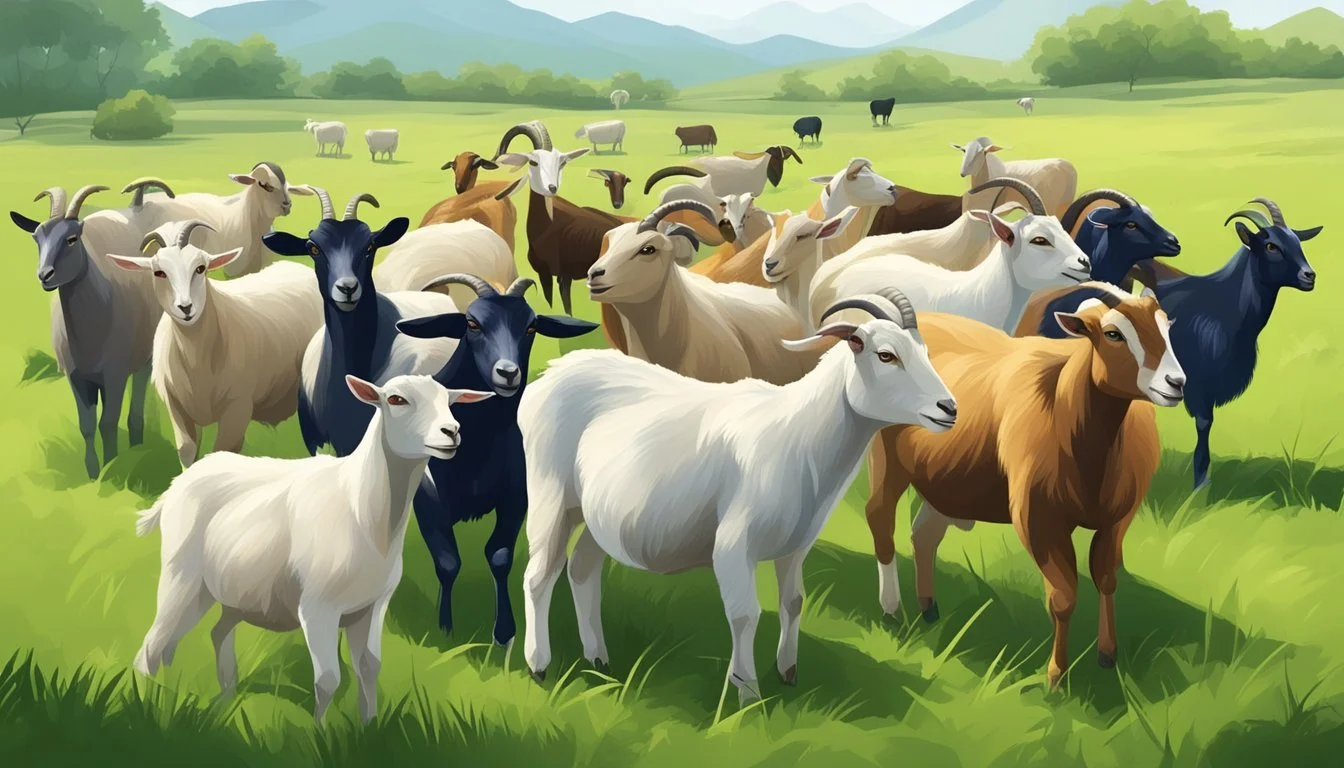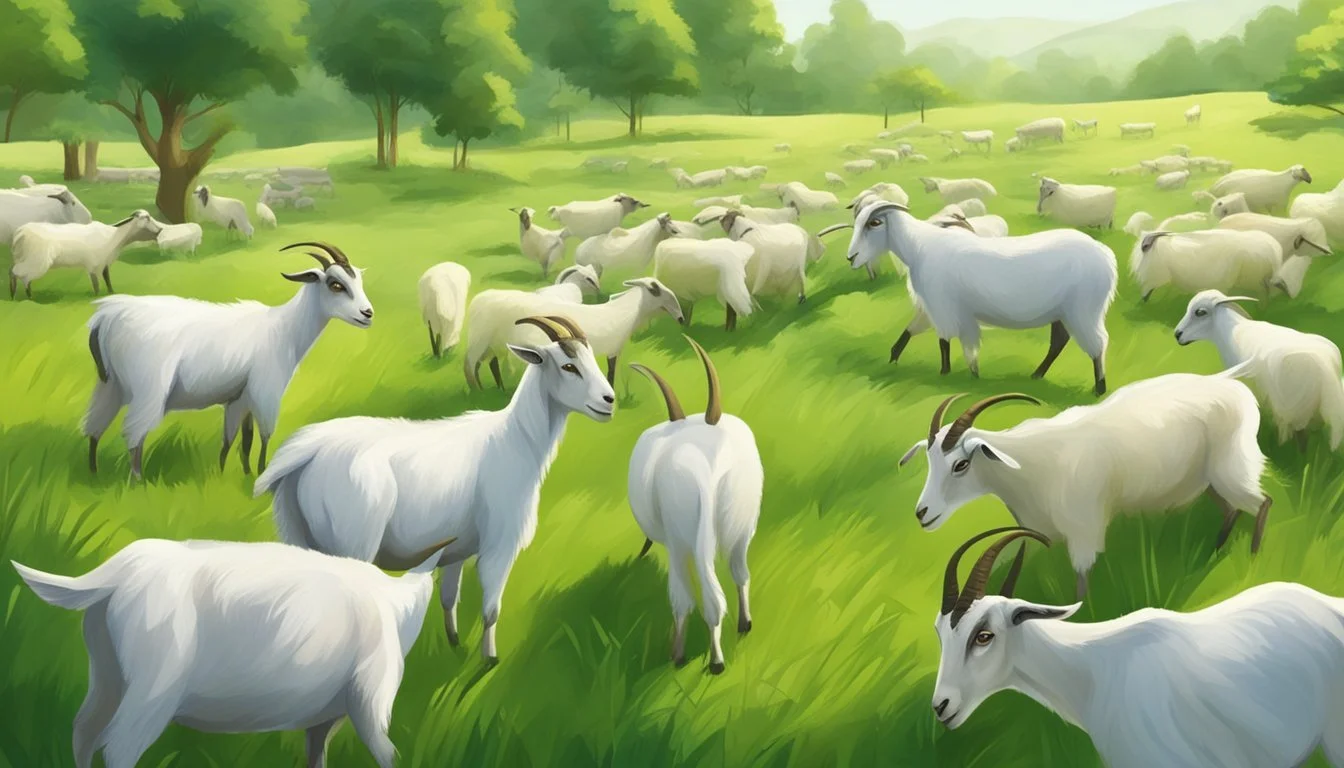What is the Life Expectancy of a Goat?
Factors Influencing Their Longevity
The life expectancy of goats can vary significantly depending on a variety of factors such as breed, care, and living conditions. A general range for goat lifespan is between 8 to 12 years, although with proper management and favorable conditions, some goats have been known to live longer. For instance, wethers, which are castrated male goats, tend to have a longer life span, often reaching up to 16 years.
Specific breeds exhibit different longevity traits. The robust and versatile Spanish goats are typically raised for meat and have a shorter lifespan of approximately 6 to 7 years. In contrast, Toggenburg goats, a dairy breed originating from Switzerland, have a life expectancy that falls within the common range of 8 to 12 years.
It is important to note that life expectancy is also influenced by factors beyond breed and purpose, including diet, healthcare, and overall living environment. Goats that are well cared for, receive preventive veterinary treatments, and live in stress-free conditions generally exhibit increased longevity compared to those facing harsher conditions.
Fundamentals of Goat Life Expectancy
Goats are known for their hardy nature and adaptability, characteristics that contribute significantly to their overall life expectancy. The average lifespan of goats is generally between 8 to 12 years. Factors influencing this range include breed, diet, environmental conditions, and the level of veterinary care they receive.
Certain breeds, such as the Nubian goat, are particularly noted for their longevity. These goats, common in petting zoos and farms, are reported to have a life expectancy of 12-20 years. The longest living goat breeds often benefit from specific care practices and genetic predispositions.
Goats' life expectancy can vary considerably:
Healthy does: Expected to live 11 to 12 years.
Wethers (neutered males): Generally enjoy a longer lifespan, averaging 11 to 16 years.
The oldest documented goat lived to surpass this range significantly, illustrating that exceptional cases can defy general expectations.
Key points affecting life expectancy:
Breeding: Does actively bred past 10 years old have higher mortality risks.
Retirement: Earlier retirement can potentially extend a does' life.
Health Care: Regular veterinary care can prevent and treat diseases, extending life expectancy.
Diet and Habitat: Proper nutrition and living conditions are crucial for longevity.
It's important to note that these are typical lifespans, and individual goats may live shorter or longer lives depending on the care and environment provided to them.
Factors Influencing Lifespan
The longevity of goats is affected by numerous elements, each contributing to how long these animals can thrive. Understanding these influences helps in providing better care and potentially extending their lives.
Genetic and Breed Factors
The genetic makeup and breed significantly determine a goat's life expectancy. For instance, Nubian goats are known for their longevity, while Pygmy goats generally have a shorter lifespan. Alpine, Boer, and LaMancha goats typically average between 8 to 12 years. Oberhasli and Saanen goats are also recognized for their robust lifespan, whereas Fainting goats and Spanish goats may have different life expectancies due to genetic predispositions.
Dietary Considerations
A goat's diet is pivotal to its health and longevity. Quality nutrition, including hay, grass, and goat feed, along with essential minerals and sufficient water intake, creates a foundation for a healthy life. Overfeeding leading to obesity or malnutrition can both drastically reduce lifespan.
Living Conditions and Care
Living conditions have a profound impact on goat health. Proper housing, protection from extreme weather, and a clean environment on a farm or homestead can improve a goat's chances of a full life span. Overcrowded or unsanitary conditions can increase the risk of disease and stress.
Health and Medical Factors
Regular vaccinations, hoof care, and deworming are vital in preventing illness. Goats can suffer from parasitic infections, such as worms, which can be managed with proper care. Additionally, stress, heat stress, and pregnancy complications require vigilant monitoring.
Aging and Physiological Changes
As goats age, they undergo physiological changes that may affect their health, such as deterioration in teeth quality, which can impact their ability to forage and digest food properly. Recognizing and adapting to these changes is necessary to maintain their well-being.
Environmental and Seasonal Effects
Weather and climate play a role in goats' health, with extreme weather conditions posing significant risks. Adequate shelter and care during harsh seasons are crucial in protecting goats from environmental stressors.
Management and Husbandry
Effective management and husbandry practices, including responsible breeding, impact goats' longevity. Ensuring that breeding goats experience minimal stress can lead to better health outcomes for both the mothers and their offspring.
Human Interaction and Stimulation
Human interaction and mental stimulation have implications for domesticated goats' health and lifespan. Goats kept as pets or in captivity require attention and engagement to prevent stress and promote an enriching habitat.
Consequences of Neglect
Neglected goats can face a host of health issues, from nutritional deficiency to unchecked diseases. The consequences of neglect are acute and can dramatically shorten a goat's life expectancy, underlying the importance of attentive care.
Record-Holding Lifespans
Outliers exist within all populations, and goats are no exception. The Guinness Book of World Records has documented instances of exceptionally long-lived goats. Although not the norm, these records showcase the potential longevity of these animals under optimal conditions.
Goat Breeds and Lifespan Variations
The lifespan of a goat can vary significantly depending on its breed. From the hardy meat breeds that may have shorter life expectancies to the robust dairy goats that often enjoy longer lives, each breed has a lifespan affected by its genetic makeup and purpose.
Dwarf and Miniature Breeds
Dwarf and miniature goat breeds, such as the Pygmy goat, typically have a lifespan ranging from 8 to 12 years. Similarly, Nigerian Dwarf goats are known for their smaller stature and can live up to 15 years when well cared for. The Pygora goat, a cross between a Pygmy and an Angora goat, also falls into this category with comparable lifespans.
Dairy and Fiber Breeds
Dairy goat breeds often enjoy longer lifespans due to selective breeding for productivity and resilience. The Nubian goat, for example, can live between 12 to 18 years. Other dairy breeds like the Alpine goat, Oberhasli goat, Saanen goat, and Toggenburg goats tend to live on average from 8 to 12 years. Angora goats, raised primarily for fiber, have lifespans similar to dairy breeds. LaMancha goats, with their distinctive short ear pinnae, are also grouped in this category and share a similar life expectancy.
Meat and Dual-Purpose Breeds
Meat and dual-purpose goat breeds, such as the Boer goat, are valued for their rapid growth and sturdy build, with lifespans ranging from 8 to 12 years. Dual-purpose breeds, which are utilized both for meat and milk, like the Kiko goat, may have varied lifespans that can be influenced by the specific conditions under which they are raised. The Spanish goat, which is a more short-lived meat breed, typically has a life expectancy of around 6 to 7 years.
Caring for Goats to Maximize Lifespan
Proper care is crucial for maximizing a goat’s lifespan. This involves a comprehensive approach that encompasses nutrition, living conditions, regular health check-ups, and attention to their mental and social needs.
Nutrition and Diet
A balanced diet is essential for goats to live a healthy and long life. They require a mix of:
Hay: Serves as the cornerstone of their diet, providing essential fiber.
Grass and Forage: Offers necessary nutrients and keeps their digestive systems functioning properly.
Goat Feed: Commercial mixes are fortified with vitamins and minerals to ensure a well-rounded diet.
Water: Must be clean and available at all times to prevent dehydration.
Incorporating these elements in the correct proportion is vital to prevent issues like obesity and nutritional deficiencies.
Shelter and Living Conditions
Goats need:
Appropriate Housing: Protects from extreme weather and predators.
Ventilation: Good air quality to reduce the risk of respiratory problems.
Space: Adequate room to roam and exercise to reduce stress.
Housing should be dry, draft-free, and designed to handle various weather conditions.
Health Management
Regular veterinary care is paramount, encompassing:
Vaccinations: Prevent common contagious diseases.
Hoof Care: To prevent lameness and infection.
Worm Control: Regular deworming to prevent parasitic health issues.
Owners must be vigilant for signs of illness, as early treatment can prevent complications.
Mental and Social Well-being
Mental stimulation and social interaction are necessary:
Toys and Puzzles: Encourage mental stimulation and reduce boredom.
Companions: Goats are herd animals and thrive on interaction with peers to prevent behavioral problems.
An environment that considers their mental needs helps maintain overall health.
Routine Maintenance and Check-ups
Scheduled check-ups allow for timely intervention. This includes:
Inspection of teeth, hooves, and body condition.
Monitoring weight to manage diet and prevent obesity.
Consistency in these checks is vital for addressing issues before they escalate.
Reproductive Management
Whether managing a herd or keeping goats as pets, understanding and managing the breeding process is critical. This includes:
Knowledge of breeding goats: To prevent inbreeding and genetic issues.
Handling pregnancy: Monitoring for complications to ensure the health of both doe and offspring.
Responsible breeding and pregnancy care can substantially affect the longevity of goats.
Challenges Impacting Goat Longevity
Several key factors play a critical role in determining the life expectancy of goats. From diseases and parasites to nutrition and weather, understanding these challenges is essential for maintaining goat health and extending their lifespans.
Disease and Parasite Load
Goats are susceptible to a variety of diseases and parasitic infections that can significantly shorten their lives if not managed properly. Effective vaccination programs are crucial in preventing fatal diseases, while regular deworming schedules help mitigate the threat of worms and other internal parasites. Early detection and treatment of illnesses can prevent lasting health complications.
Injury and Predation
Physical injuries due to accidents or encounters with predators pose serious risks to goats. Fencing and secure housing reduce the chance of harm, but timely veterinary care following injuries is important. Protection from predators, such as building predator-proof shelters, is a necessary step in safeguarding goats from attacks, which can be a common cause of mortality.
Nutritional Deficiencies and Disorders
Appropriate nutrition is vital for goats to lead a healthy and full life. Nutritional deficiencies can lead to disorders such as obesity, weakened immune systems, and developmental issues. A balanced diet that is tailored to the age, breed, and activity level of the goat helps prevent these issues and contributes to overall health and longevity.
Climatic and Weather-Related Issues
Adverse weather conditions, including extreme weather and heat stress, can severely affect goats' well-being. Adequate shelter that provides protection from the elements and methods to regulate body temperature, like access to shade and clean water, are essential, especially in regions where weather can be extreme. These precautions help prevent stress-related complications that can arise from environmental challenges.
Goat Population Demographics
Understanding the demographics within goat populations is crucial when considering their life expectancy. This includes the age distribution, differences in longevity based on sex, and overarching population dynamics.
Age Distribution
In goat herds, the age distribution typically shows a pyramid structure, with a larger number of kids at the base and gradually fewer older goats at the top. A significant portion of the population comprises juvenile goats, as mortality rates can be high in the first year. Healthy does are expected to live approximately 11 to 12 years. The oldest goats are less common and often hold positions of leadership within the herd. These senior goats can provide insight into the effectiveness of care and management practices within the population.
Sex-Based Longevity Differences
Longevity in goats can vary markedly between the sexes. Generally, female goats, or does, live longer than male goats, or bucks. Wethers—castrated male goats—tend to outlive bucks, with an average lifespan of 11 to 16 years. Breeding plays a significant role in this disparity, as the physical demands of reproduction and birthing can affect the health and lifespan of both does and bucks.
Population Dynamics
Goat populations are influenced by various factors, including breeding practices, habitat, and management. In caring for livestock, practices such as selecting for specific traits and improving living conditions have the potential to extend the average lifespan within a population. In Asia, goats make up 57.7% of the world's population and those well-adapted to their environments can reportedly reach life expectancies of 12 to 20 years. The dynamics of goat populations often reflect local agricultural practices and cultural importance of these herd animals.







